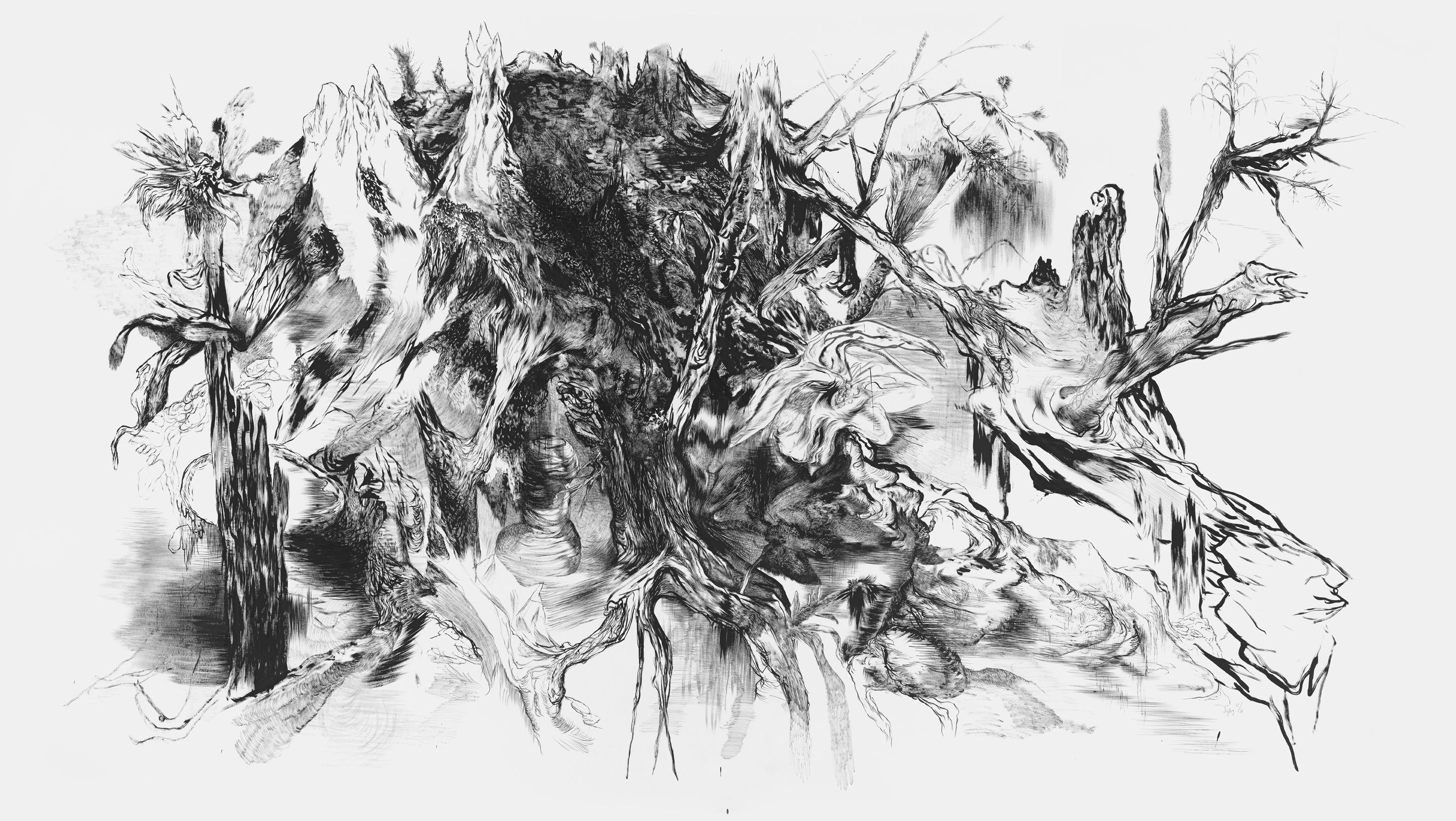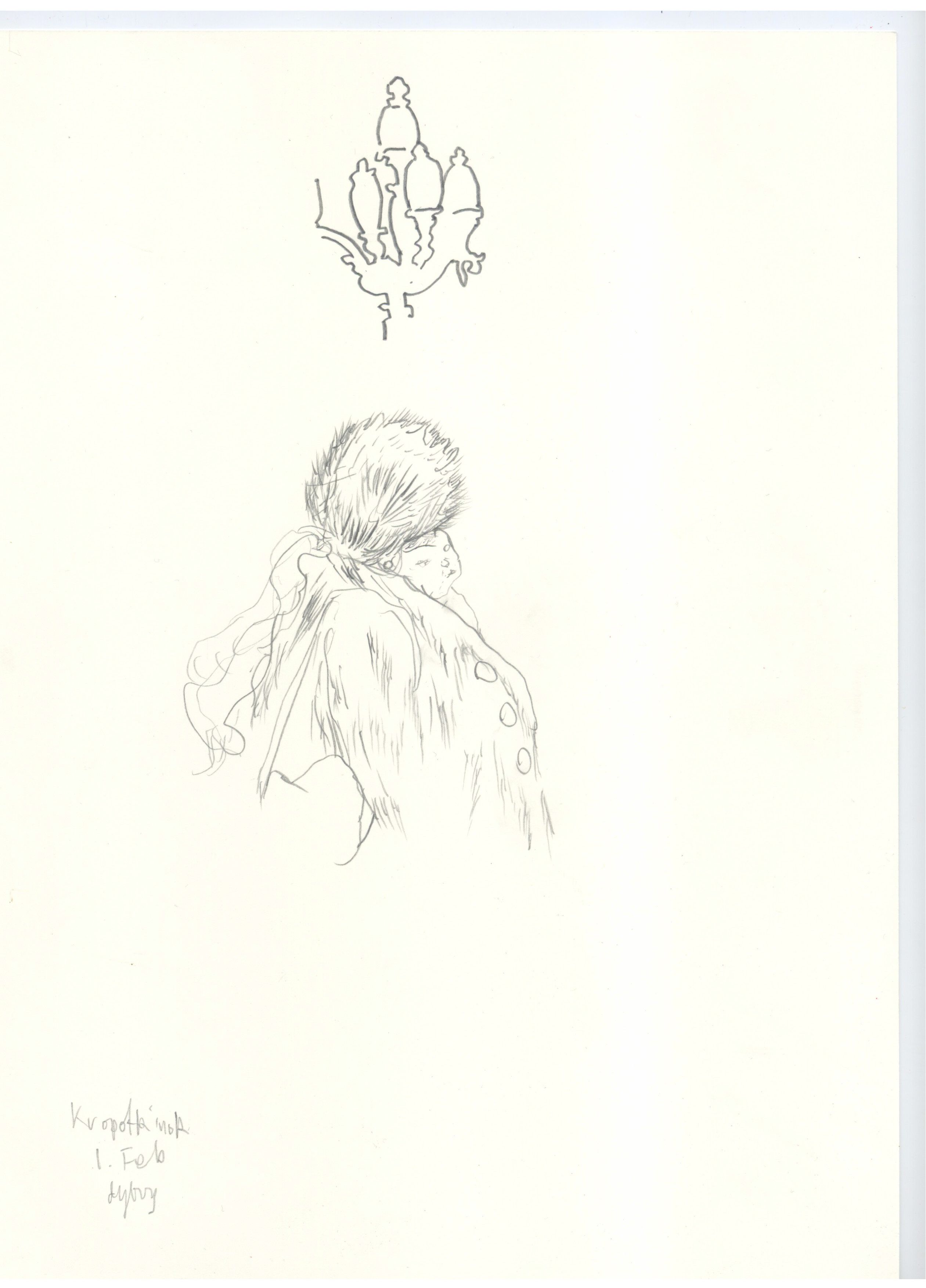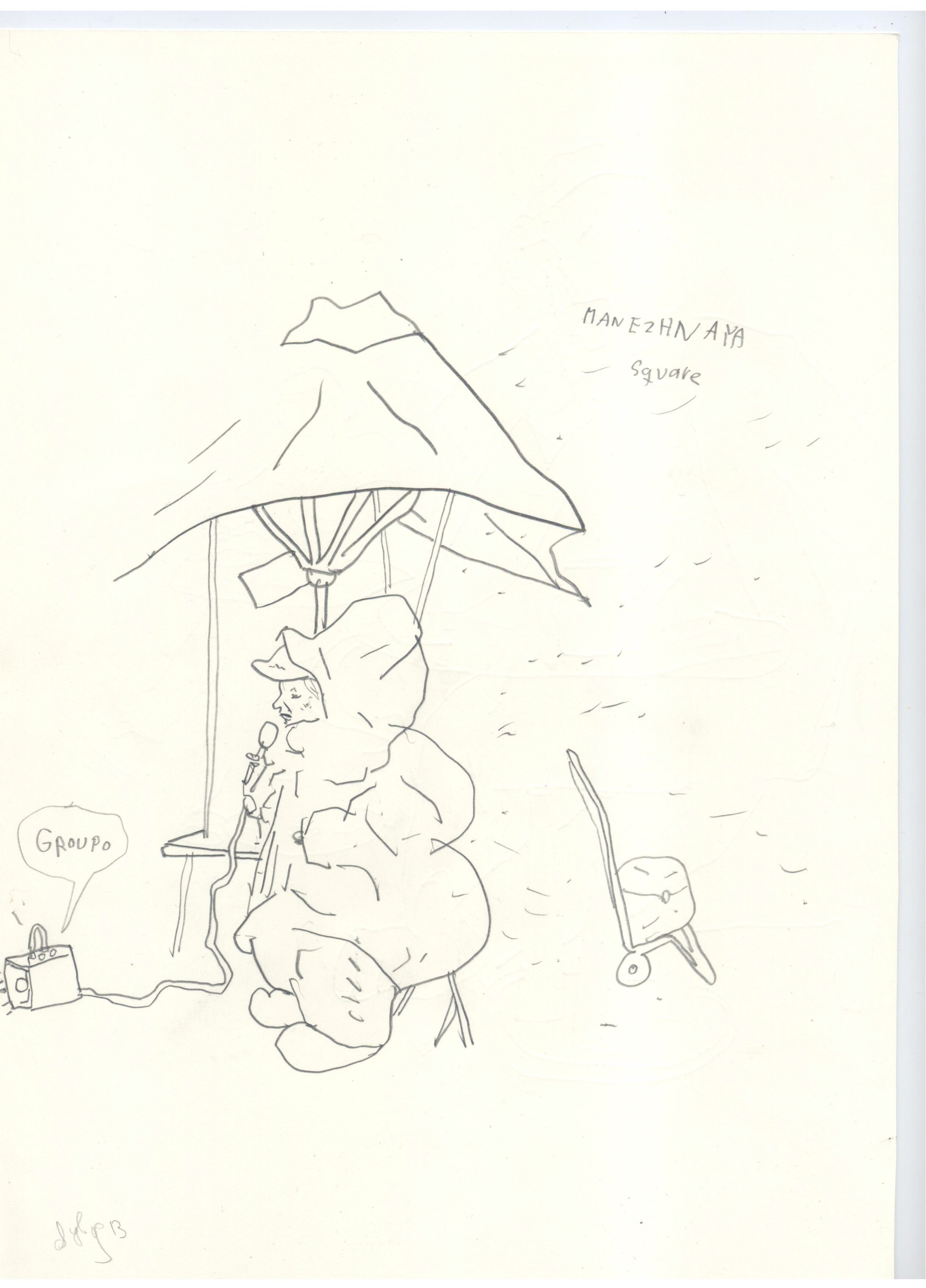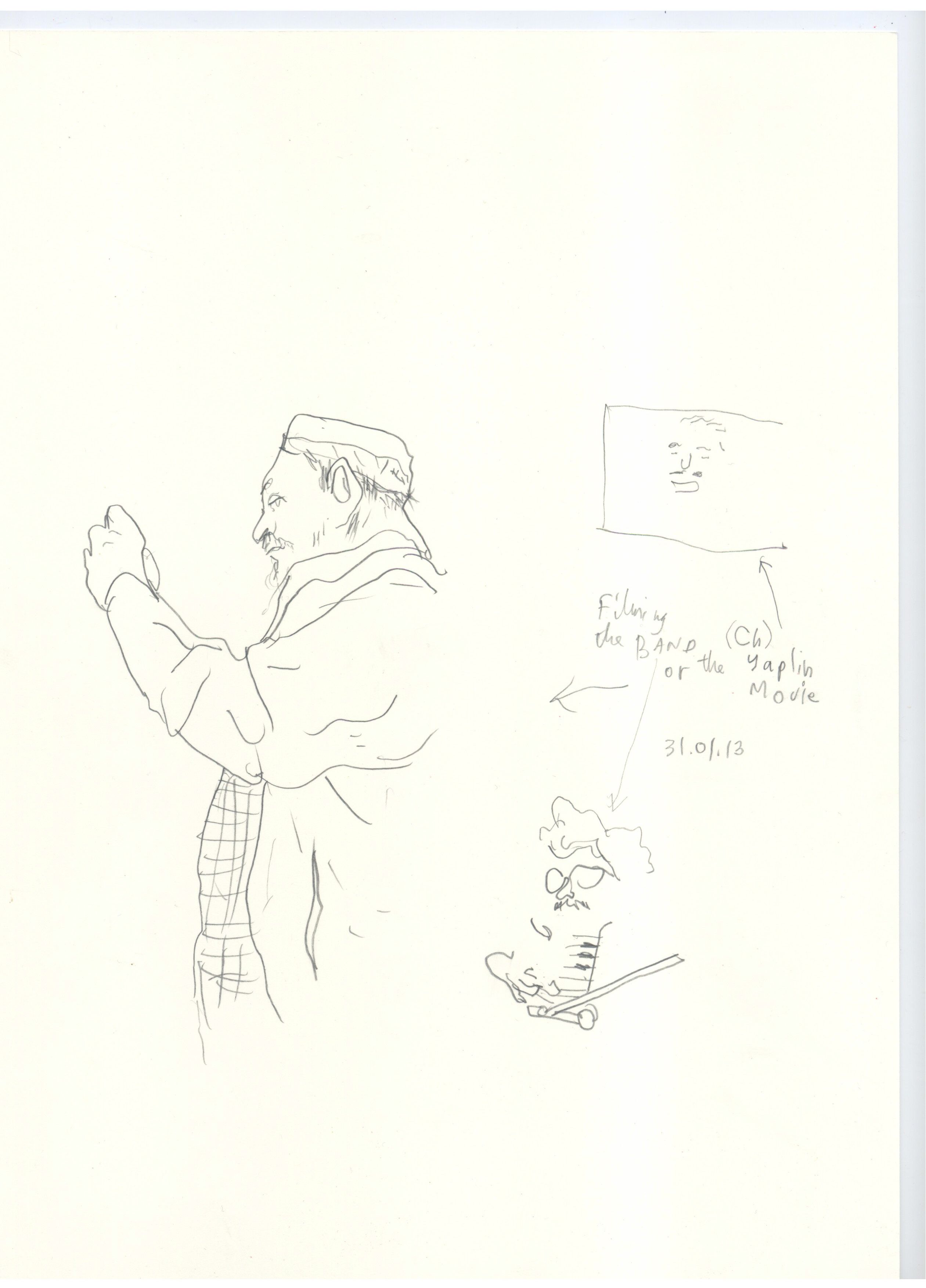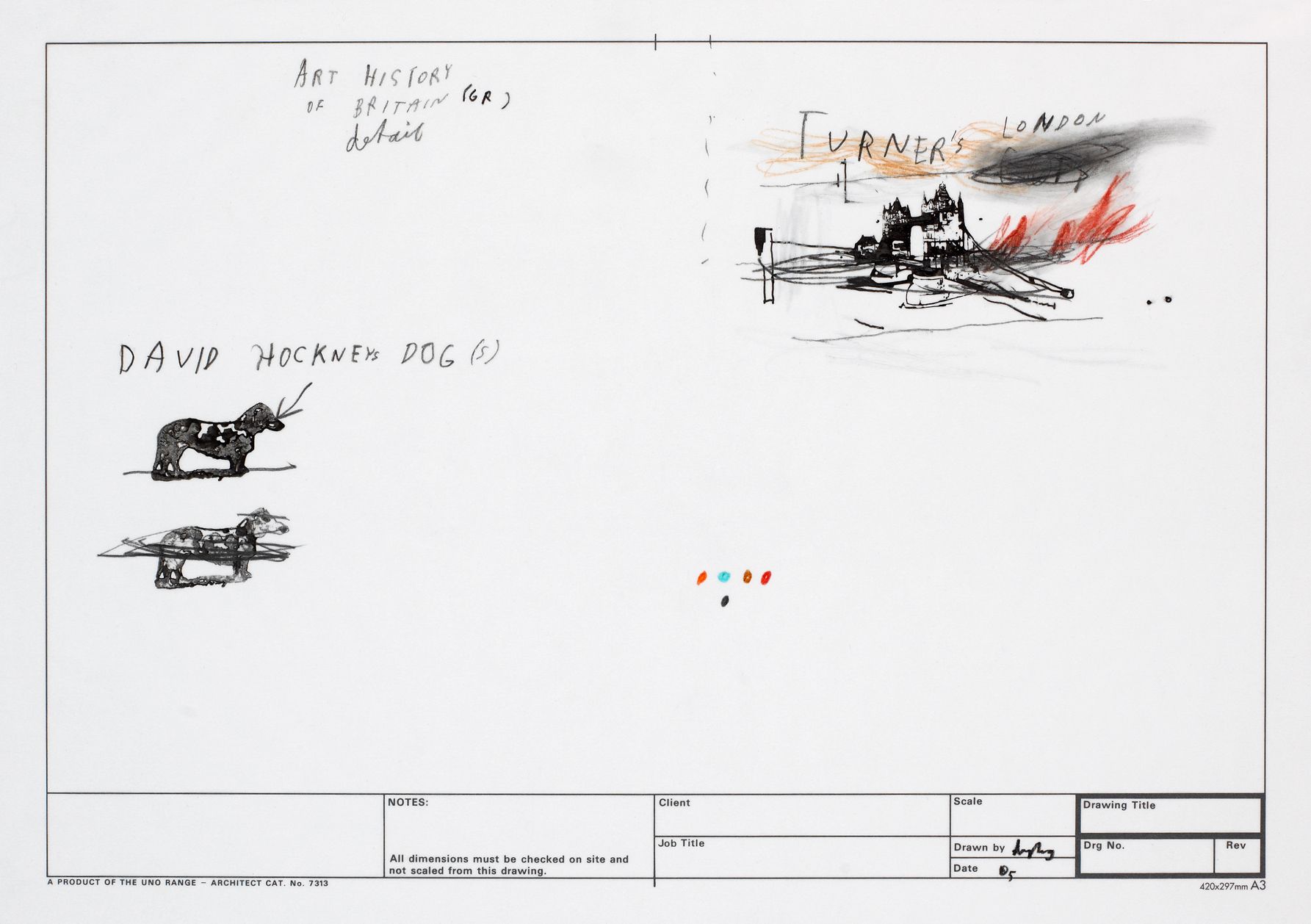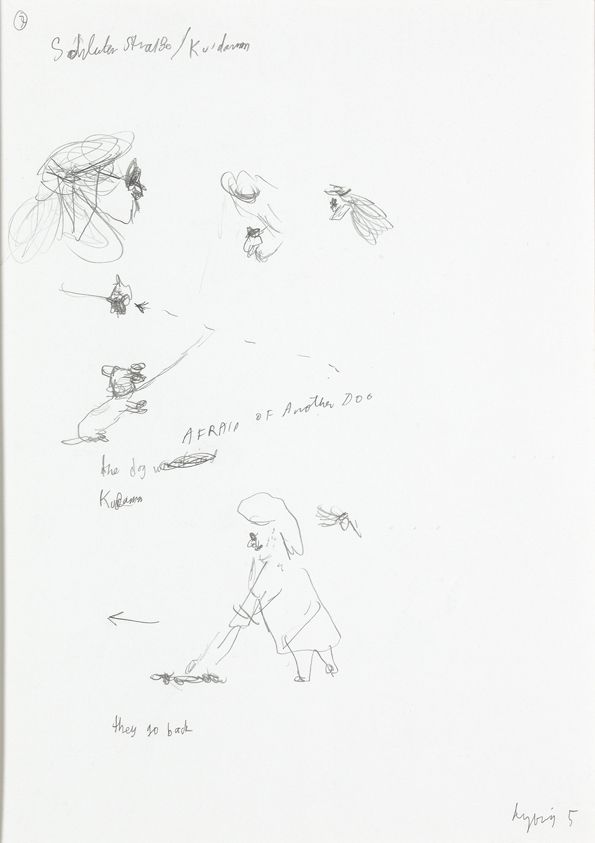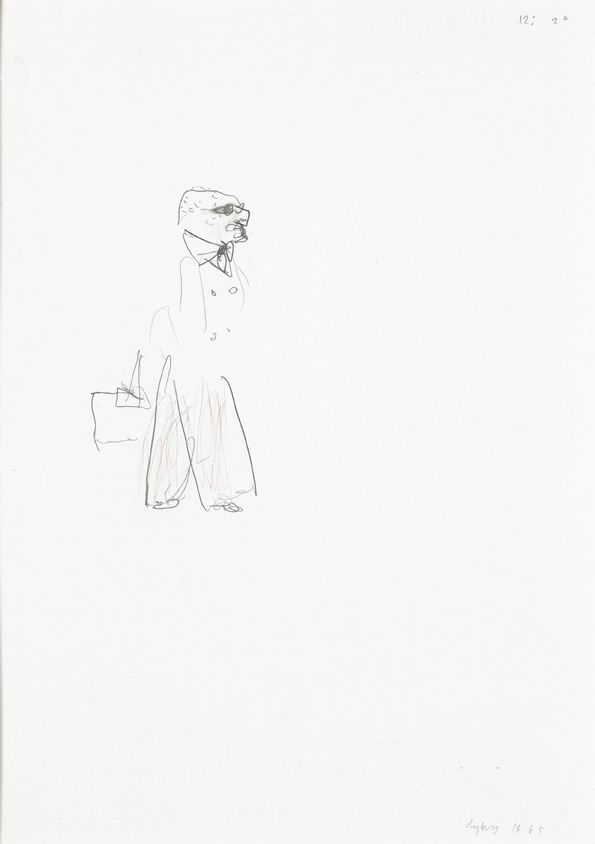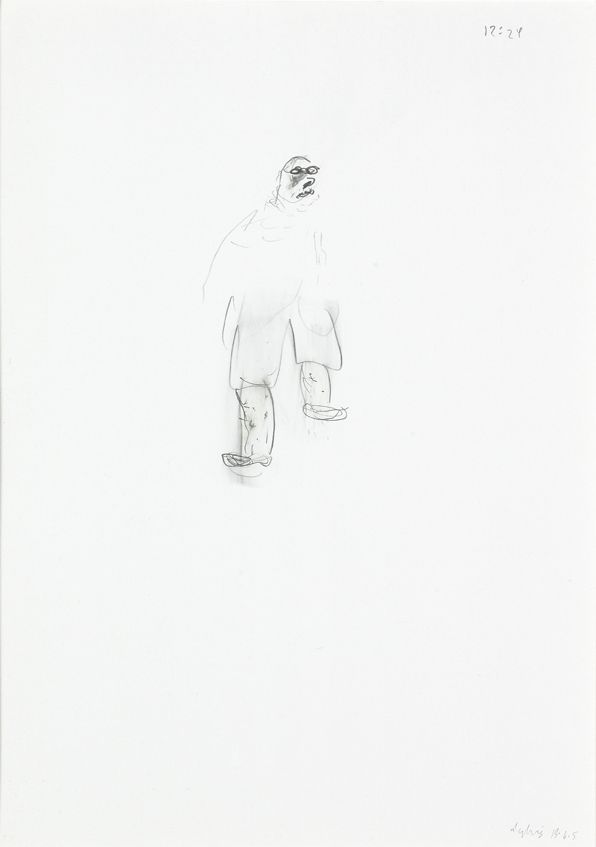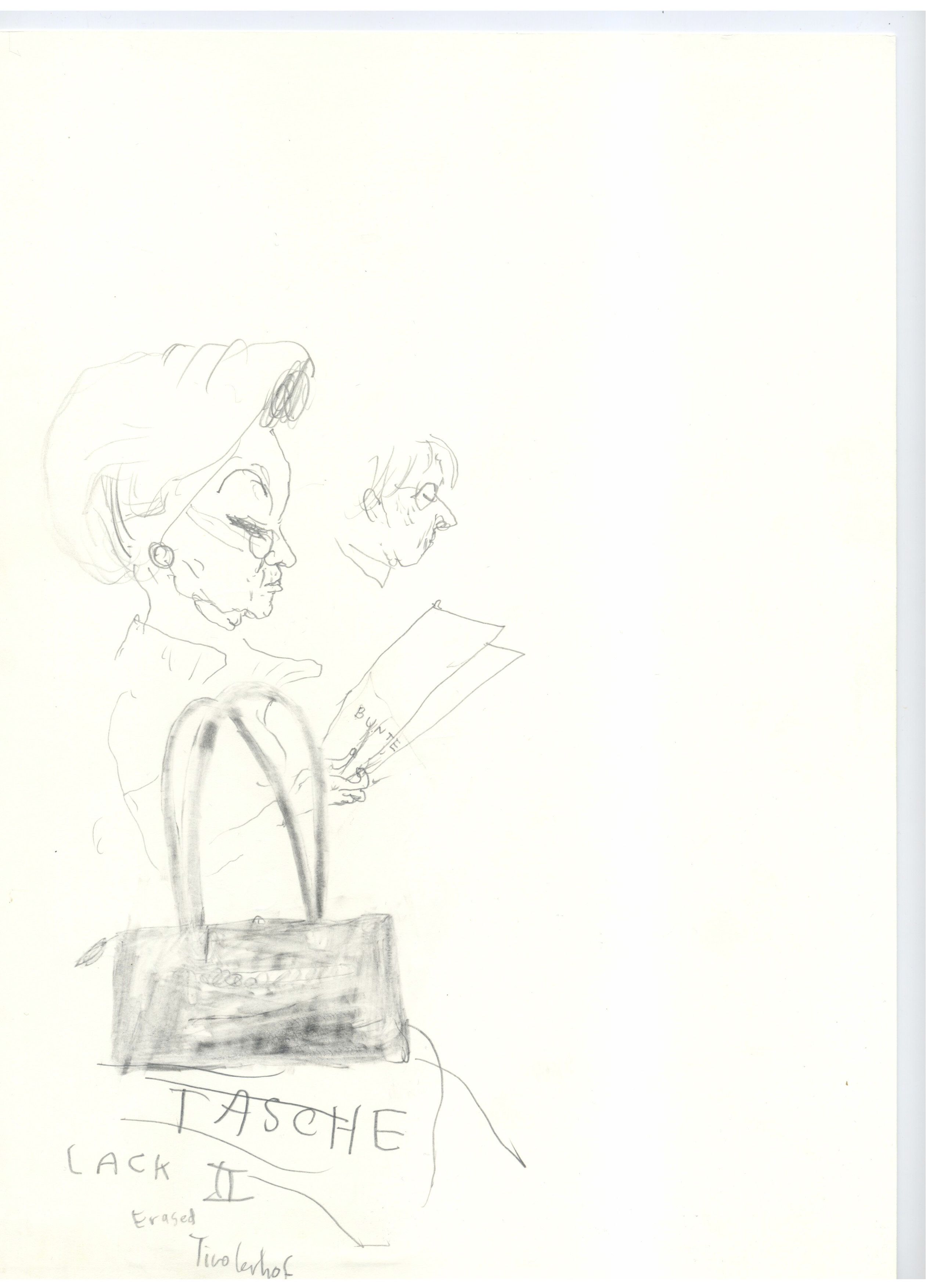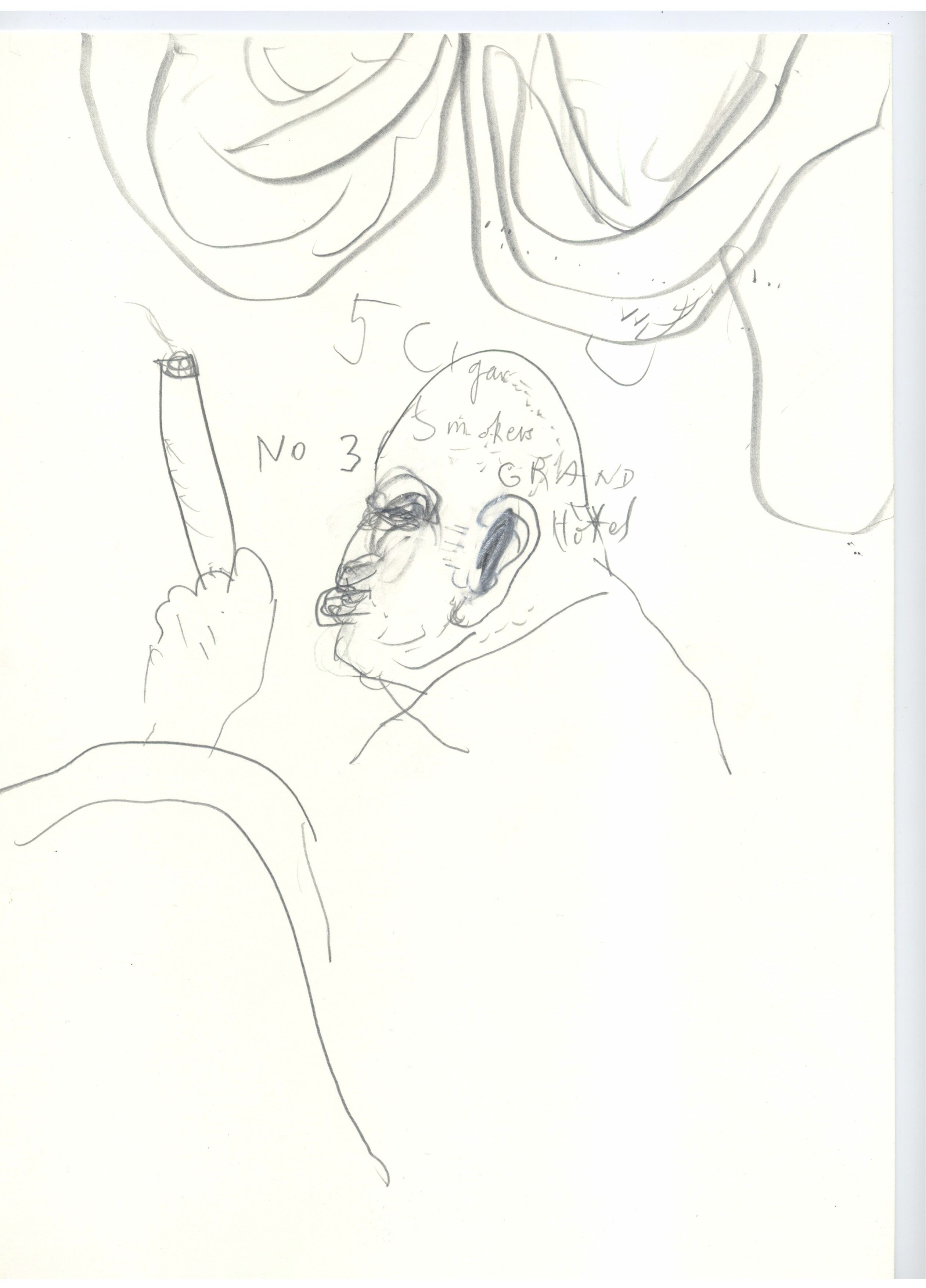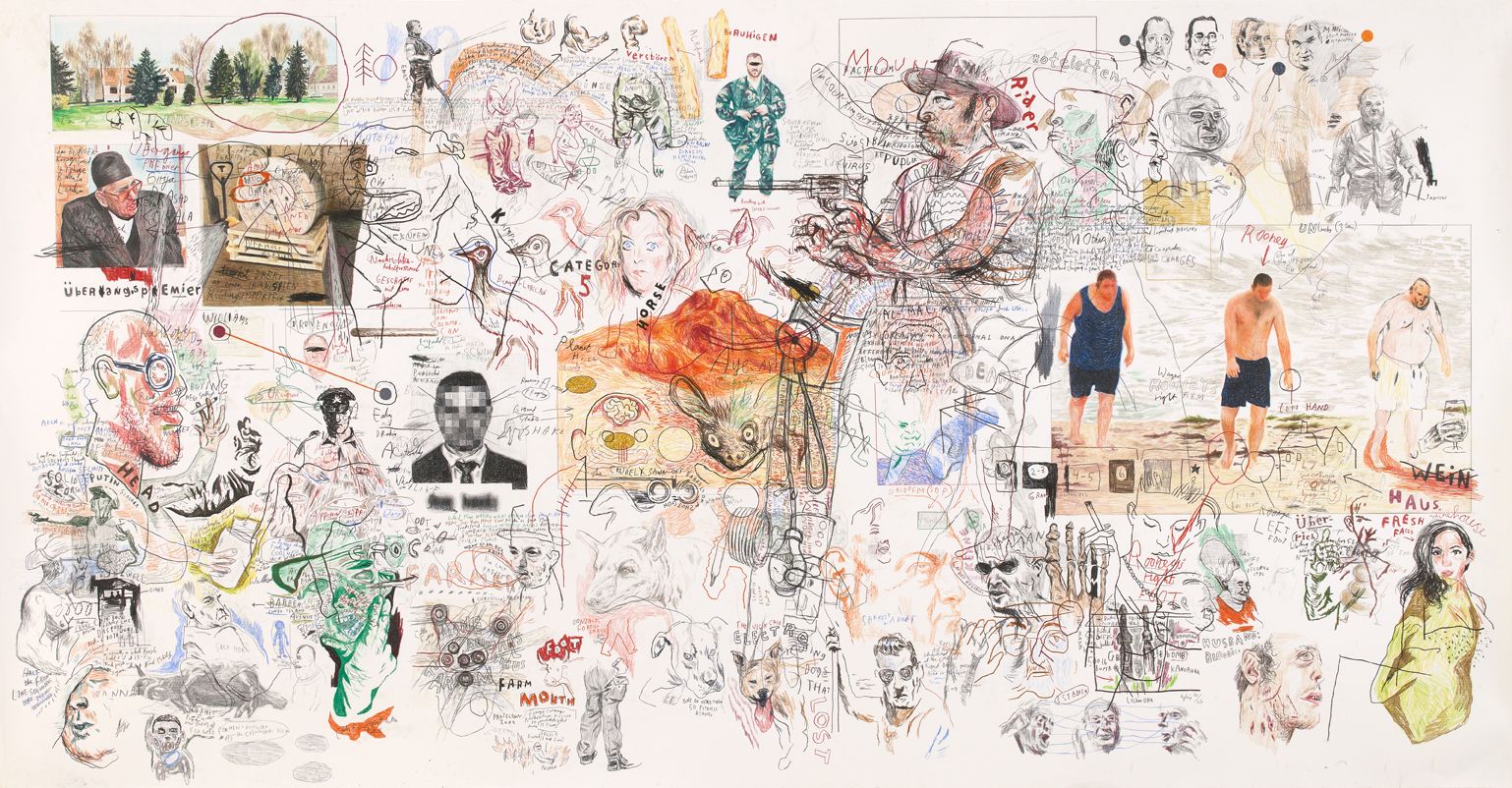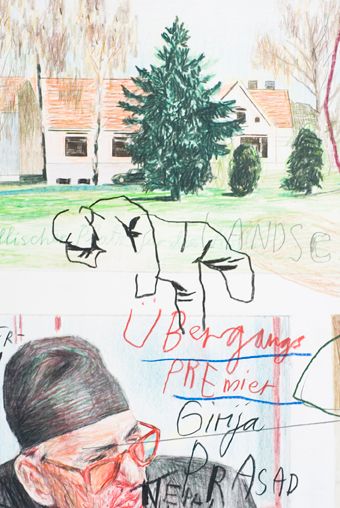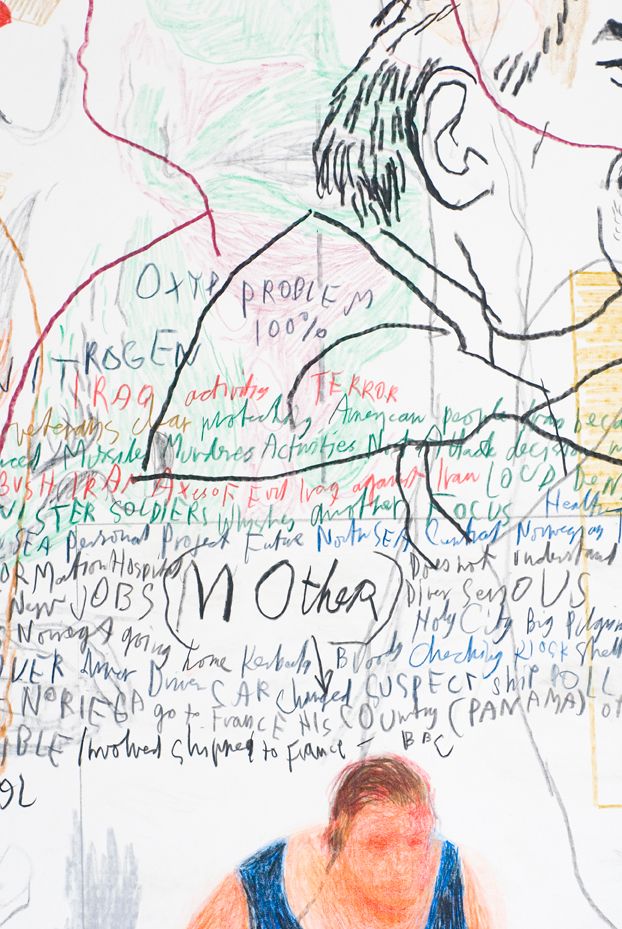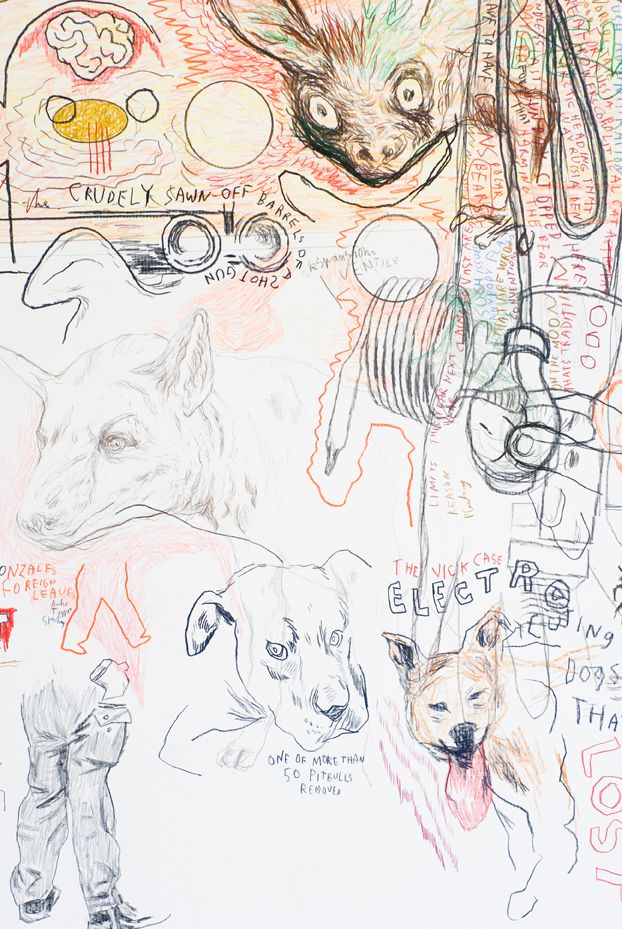There is a long wall that connects this room with another. Along this wall is a series of drawings called Bronx Zoo Birds and Smokers – Suite (2008) presented in one long line. As the other series of similar drawings are typically presented in a rectangular shape with rows and columns, the reference to cartoons feel much more insistent. In this case, the presentation of the drawings rather accentuates the repetitive topic. It feels less like a story being told, and more like examining the odd similarities between birds and smokers with a magnifying glass. Depicted with thin, delicate lines on small areas on the paper, the drawings force the viewer into a closer inspection of the work. This element allows for an intimacy that is reminiscent of examining the illustrations in books. It feels like an understatement, but it strengthens the sense of curiosity and suspense I feel as a viewer of these scenes. Had the drawings been depicted large, the sense of voyeurism and intricacy may have been lost. Now they make me feel as though I am actually walking around inside the Bronx Zoo, secretly observing certain types of people (smokers) as well as the animals and entertaining myself with how they resemble one another.
In one of the other rooms upstairs hangs the I’m Counting on You Potato Head (2006 – 07). It is made with colored pencil on paper and almost covers the entirety of the wall. The drawing shows people and creatures in various settings and formats. They are primarily engaging in various areas of adult life. Work, the human body, violence and intellect are explored and presented in a funny, satirical, dark and frightening manner. This piece lives up to its size quite well, and avoids feeling watered down as some of Dybvig’s other larger pieces tend to do.
The composition of this exhibition, in which the curators have included a wide range of works by Dybvig, is reminiscent of a retrospective. The pieces vary greatly in terms of how well they add to the exhibition as a whole, but Stavanger Art Museum offers a wonderful and well-rounded opportunity to experience the multifaceted practice of Dybvig.


